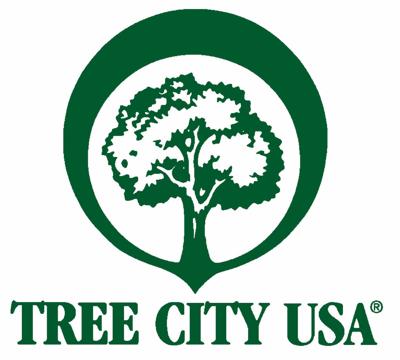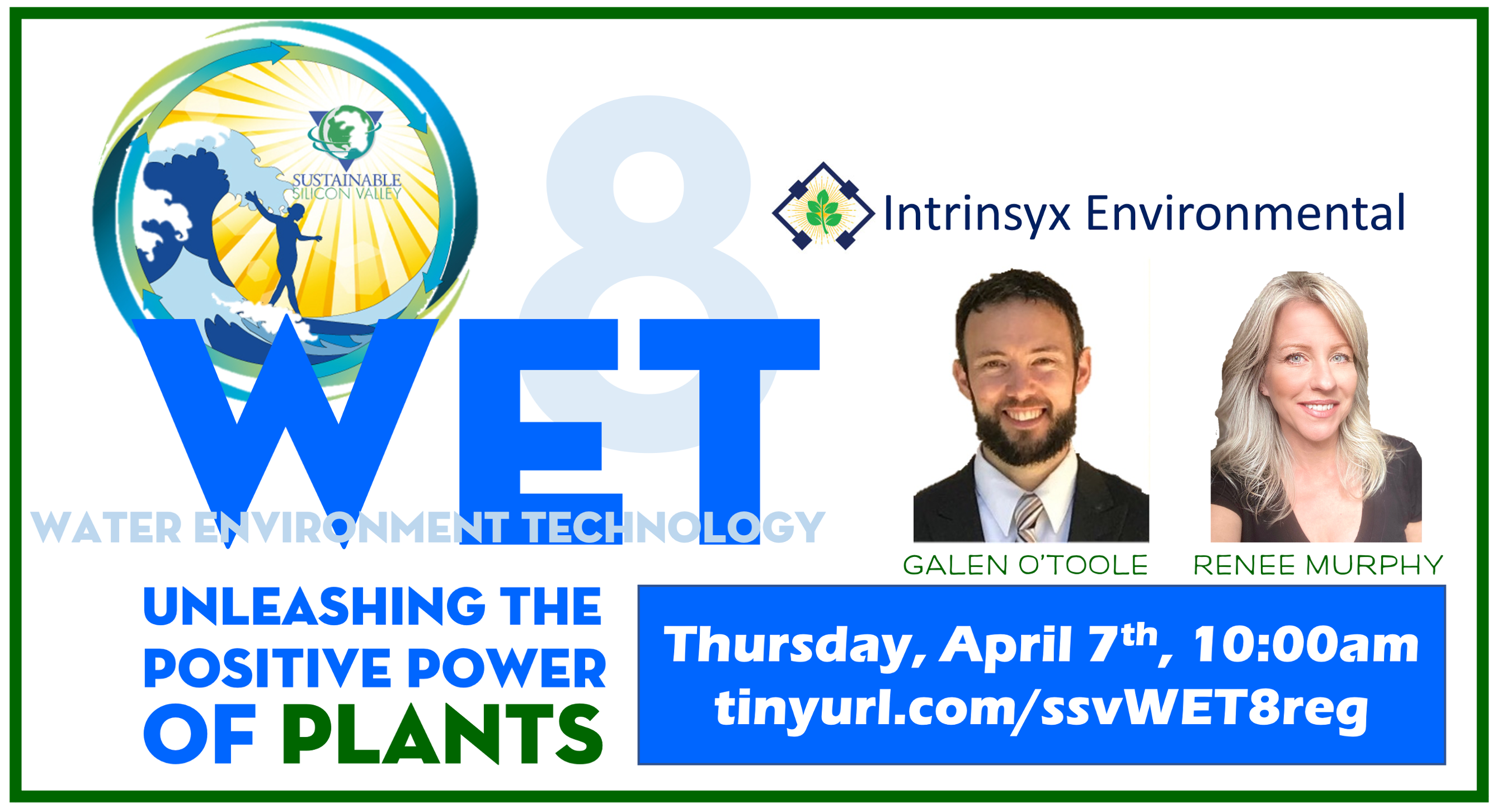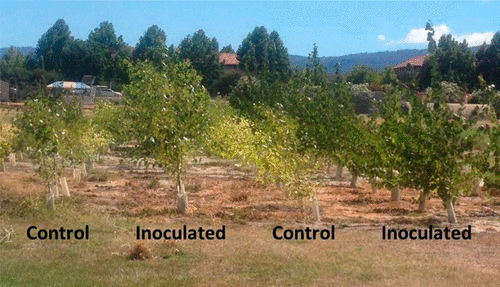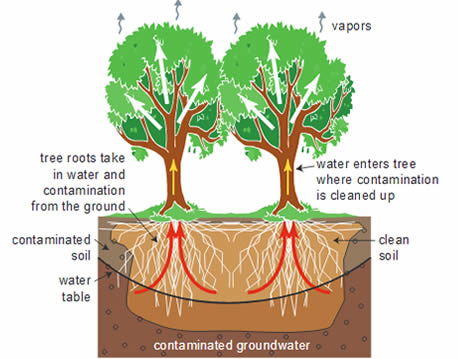Unleashing the Positive Power of Plants: A WET Talk 8 Recap
Our latest WET Talk featured Galen O’Toole and Renee Murphy of Intrinsyx Environmental talking about the promise and potential of plants and the power of endophyte-assisted phytoremediation. (Watch the WET Talk 8 video) (Phytoremediation is cleanup of tainted soil or water using plants; endophytes are microbes that live in a symbiotic relationship inside plants and their rhizospheres, or the immediate soil-root environment.) For example, as a pilot project, Intrinsyx Environmental planted inoculated hybrid poplar trees at Moffett Field in Mounta
in View to clean contaminated groundwater; it was quite successful, and they’ve done some 30 such projects around the country, as summarized in this NYT article.
How does phytoremediation work and how does Intrinsyx Environmental accomplish it?
The standard procedure for brownfield remediation involved soil vapor extraction (SVE) and “pump & treat” methods, but they have a high cost and limited efficacy. Hyperaccumulators, plants that take up and store high concentrations of particular heavy metals, can be ideal for the right situation. But simply planting trees on a site with polluted soil or groundwater can lead to problems: the trees don’t have a great survival rate, and repeated plantings start to drive up costs. The places where you’d most want the trees to do their remediation work were also the places where they don’t thrive!
This is where the endophytes enter. Isolating naturally-occuring (not GMO) endophytes for trees can help degrade petroleum and chlorinated solvents, increase the trees’ drought and salt tolerance, and improve their biomass growth per unit of water consumed (water use efficiency). This exciting applied microbiology is based on research done by Dr. Sharon Doty, Professor of Environmental and Forest Sciences at the University of Washington, and licensed by Intrinsyx Environmental and its sister company, Intinsyx Bio, which focuses on the agriculture market.
Someday, plants and trees with beneficial boosts from these probiotics will be a consumer landscaping option for yards and gardens.
What kinds of trees are used?
Selection of trees and plants used in phytoremediation is determined in an integrated design process. When selecting trees for a site where groundwater remediation is required, Intrinsyx Environmental often uses hybrid poplars, which transpire 100 times the water of other prospective tree choices. Hybrid poplars used are non-invasive and can’t reproduce or cross-pollinate with other plants nearby. They also make a great transition species, as they establish themselves quickly, have a relatively short lifespan, and shade out invasive species. They have deep taproots that extend up to 35 feet underground.
For soil remediation sites, a variety of native plants are used more often. Native plants that also work with microbes to achieve the desired goal are carefully selected by Intrinsyx Environmental during the integrated design process.
Reforestation
Burn sites in forests can be difficult to remediate because of chemicals such as methane released by burning vegetation as well as firefighting chemicals. Endophytes can help here as well. Intrinsyx Environmental has partnered with the company PRSI to contribute endophytes to a seed ball designed to be dropped from drones; it contains native seeds and nutrients, biochar, and is inoculated with endophytes.
Urban Forestry
Phytoremediation can be a great boon to urban areas. The trees used on the remediation site provide canopy, mitigating the heat island effect and reducing the need for air conditioning. The city gains green space which can be beautified before remediation is complete.
A New Beginning and Market Opportunities
Studies show that when breaking down organic compounds such as petroleum or chlorinated solvents, they become totally decomposed into component chemicals which can be metabolized by trees and microbes. Thus, at the end of their lives, larger trees are generally safe to be used as lumber and smaller plants can be used for biochar.
Because of the increasingly drought-inflicted climate in California, Intrinsyx Bio sees now as the right time for endophyte-inoculated plants, with their enhanced water use efficiency, to be introduced at the consumer level at garden centers!

If you’re in an Arbor Day Foundation Tree City, you can get a free consultation for a site of concern at https://www.arborday.org/phyto.
Floating Wetlands
Other work by Intrinsyx Environmental remediates bodies of water such as reservoirs; floating islands cure toxic algae blooms. Roots extending below the islands deep into the water provide a matrix for beneficial bacteria. Solar powered aeration moves the water and adds air. These wetlands remove metals and nutrients from concentrated brine that comes from the reverse osmosis process. This acts as a testbed for water reuse projects undertaken by Valley Water.


